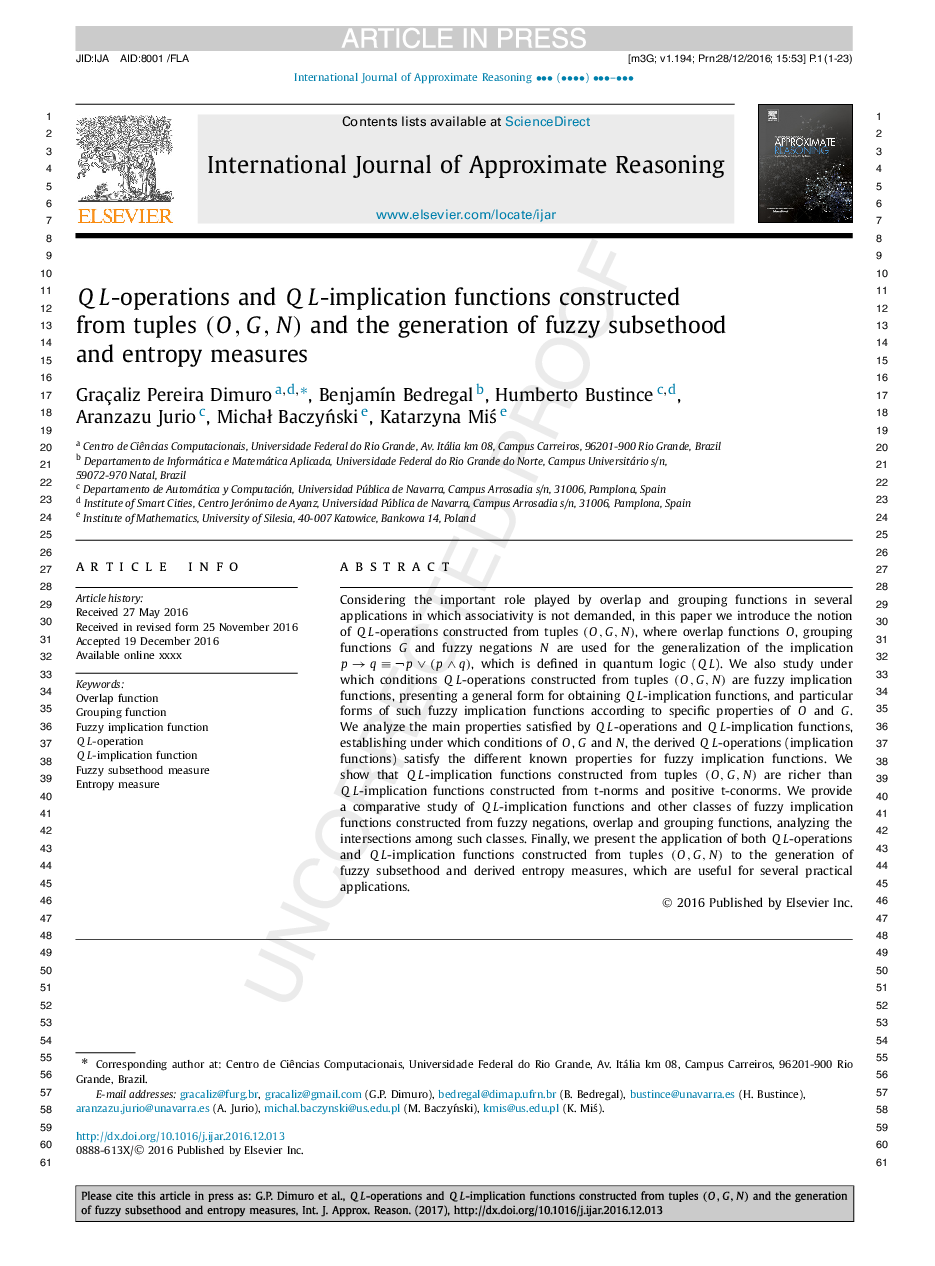| Article ID | Journal | Published Year | Pages | File Type |
|---|---|---|---|---|
| 4945307 | International Journal of Approximate Reasoning | 2017 | 23 Pages |
Abstract
Considering the important role played by overlap and grouping functions in several applications in which associativity is not demanded, in this paper we introduce the notion of QL-operations constructed from tuples (O,G,N), where overlap functions O, grouping functions G and fuzzy negations N are used for the generalization of the implication pâqâ¡Â¬pâ¨(pâ§q), which is defined in quantum logic (QL). We also study under which conditions QL-operations constructed from tuples (O,G,N) are fuzzy implication functions, presenting a general form for obtaining QL-implication functions, and particular forms of such fuzzy implication functions according to specific properties of O and G. We analyze the main properties satisfied by QL-operations and QL-implication functions, establishing under which conditions of O, G and N, the derived QL-operations (implication functions) satisfy the different known properties for fuzzy implication functions. We show that QL-implication functions constructed from tuples (O,G,N) are richer than QL-implication functions constructed from t-norms and positive t-conorms. We provide a comparative study of QL-implication functions and other classes of fuzzy implication functions constructed from fuzzy negations, overlap and grouping functions, analyzing the intersections among such classes. Finally, we present the application of both QL-operations and QL-implication functions constructed from tuples (O,G,N) to the generation of fuzzy subsethood and derived entropy measures, which are useful for several practical applications.
Keywords
Related Topics
Physical Sciences and Engineering
Computer Science
Artificial Intelligence
Authors
Graçaliz Pereira Dimuro, BenjamÃn Bedregal, Humberto Bustince, Aranzazu Jurio, MichaÅ BaczyÅski, Katarzyna MiÅ,
